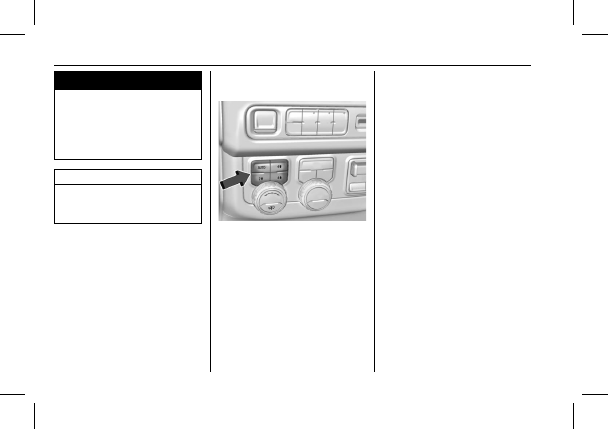
Automatic Transfer Case; Driving and Operating; Two-Speed Transfer Case- Page 229
2022 Chevrolet suburban Owner Manual
Table of Contents

Chevrolet Tahoe/Suburban Owner Manual (GMNA-Localizing-U.S./Canada/
Mexico-15555985) - 2022 - CRC - 8/3/21
228
Driving and Operating
Warning (Continued)
someone else could be seriously injured.
Be sure the transfer case is in a drive
gear
—
2
m
, 4
m
, or 4
n
—
or set the
parking brake before placing the transfer
case in N (Neutral). See
.
Caution
Extended high-speed operation in 4
n
may damage or shorten the life of the
drivetrain.
An engagement noise and bump is normal
when shifting between 4
n
and 4
m
or
N (Neutral), with the engine running.
Shifting into 4
n
will turn Traction Control
and StabiliTrak/Electronic Stability Control
(ESC) off. See
Automatic Transfer Case
Two-Speed Transfer Case
If equipped, the transfer case controls are
used to shift into and out of four-wheel
drive.
To shift the transfer case, press the desired
button. The graphic in the instrument
cluster will flash while a shift is in progress.
The graphic displayed will change to indicate
the setting requested.
When the shift is complete the graphic will
stop flashing. The DIC message turns off
once the shift is complete. If the transfer
case cannot complete a shift request, it will
go back to its last chosen setting.
The settings are:
N (Neutral) :
Use only when the vehicle
needs to be towed. See
or
2
m
(Two-Wheel Drive High) :
Use for driving
on most streets and highways. The front
axle is not engaged. This setting provides
the best fuel economy.
AUTO (Automatic Four-Wheel Drive) :
Use
when road surface conditions are variable.
When driving in AUTO, the front axle is
engaged, and the vehicle's power is sent to
the front and rear wheels automatically
based on driving conditions. This setting
provides slightly lower fuel economy
than 2
m
.
4
m
(Four-Wheel Drive High) :
Use this
setting when extra traction is needed, such
as when driving on snowy or icy roads,
when off-roading, or when plowing snow.
4
n
(Four-Wheel Drive Low) :
This setting
engages the front axle and delivers extra
torque. Choose 4
n
when driving off-road in
deep sand, deep mud, or deep snow, and
